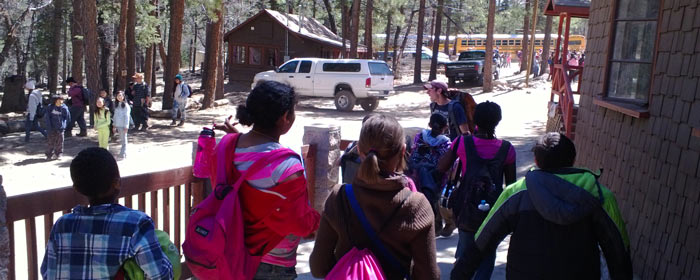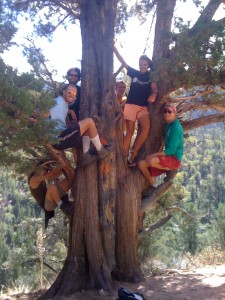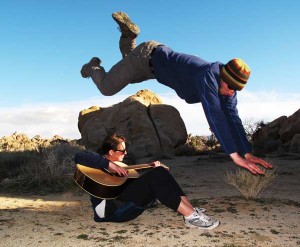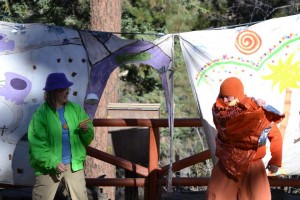“Wait, you don’t have a TV?” My students’ mouths are agape. “Nope,” I cheerily reply. “So… you don’t watch TV at all?” “Nope,” I say again with a little smile. In their eyes I am suddenly an alien, and I’m okay with it. Their jaws are fully on the ground. “So… what do you do?”
I have this conversation almost every week. As well as being shocking, it represents the thought processes of most 11-year-olds; they think of the world only in terms of what they know. At that age, an important part of growing as a person involves the recognition that they are part of a world bigger than their family and friends. Personal growth cannot be forced, but exposure to many different settings provides a push in the right direction. This seems challenging, and it certainly is.
 Some of us have expanded our comfort zones through travel, others through interactions with different people. Many of our students have never been fortunate enough to have similar experiences, and through conversations like the one I described, the limits of their personal bubbles become apparent. When I think back to that conversation, I see a clear benefit of High Trails. To our students, we are that unusual place with weird people who don’t watch TV.
Some of us have expanded our comfort zones through travel, others through interactions with different people. Many of our students have never been fortunate enough to have similar experiences, and through conversations like the one I described, the limits of their personal bubbles become apparent. When I think back to that conversation, I see a clear benefit of High Trails. To our students, we are that unusual place with weird people who don’t watch TV.
These differences make us stand out, they widen perspectives, and because they are not taught from lesson plans, they embody big-picture lesson #2: The World You Know Is Not the Entire World.
In my last post, I described areas of our program that reinforce the idea that nature is not the enemy. That big-picture lesson begins soon after students arrive at camp; this one begins before they even get up from their seats. Simply observing snow-capped mountains outside the bus windows can inspire wonder. Areas of our curriculum, too, expose students to diverse ways of life. In the first class every student experiences, Team Discovery Hike, we talk about how Native Americans lived and demonstrate how to make fire with a bow drill. In our Water Wonders class, we discuss how some people only have access to polluted water.
 These specific parts of these classes aptly develop their particular subjects, and we hope that they also, as instances of other peoples and ways of life, spur students to think about their place on a large and diverse planet. However, the Native Americans and developing countries are far away in time and place. If a concept doesn’t relate to a student’s life in any way, he or she is unlikely to think about it further. Even all that “weird and wacky” stuff about High Trails means very little unless students have a reason to think that it all somehow applies to them.
These specific parts of these classes aptly develop their particular subjects, and we hope that they also, as instances of other peoples and ways of life, spur students to think about their place on a large and diverse planet. However, the Native Americans and developing countries are far away in time and place. If a concept doesn’t relate to a student’s life in any way, he or she is unlikely to think about it further. Even all that “weird and wacky” stuff about High Trails means very little unless students have a reason to think that it all somehow applies to them.
Here enter the cabin instructors, good people who teach night classes, eat meals with students, and sleep in the cabins with them. Because these instructors are role models and friends rather than strictly teachers, they have the opportunity to become an emotional link between students and this place. By earning their students respect, and subsequently their ears, cabin instructors have a chance to really drive home big-picture lesson #2, especially by emphasizing that different people live in different ways.
 Every cabin instructor exposes students to this idea differently, yet many of us tread on similar ground by using ourselves as examples. To our students, we epitomize “different.” We live in the forest, and we have some strange habits.
Every cabin instructor exposes students to this idea differently, yet many of us tread on similar ground by using ourselves as examples. To our students, we epitomize “different.” We live in the forest, and we have some strange habits.
One student wrote that in six months he would remember that High Trails instructors don’t shower – ever. While his observation may not be entirely true, this student learned that not everybody is like him.
In this understanding, I believe, came personal growth, just as in the eye-opening conversation from earlier about not watching TV. Similarly, much of the staff is vegetarian, an uncommon way of life that many students notice. Some undoubtedly go further and think about why we have made that choice. The simple knowledge that there is an alternative to what they have always known, or that they have the ability to choose a different path, can fill young minds with new possibilities.
We’re not trying to turn our students into vegetarians or to have them think that infrequent bathing is okay in every situation. It’s not our place to push personal choices onto students. Still, we give them facts. We give them a new and exciting place. As instructors, we are… ahem… strange, yet still relatable.
By doing and being all these things, we push students in so many ways towards the realization that the world is bigger and more diverse than they previously may have thought. And this is important in a big way: inspiring students to think about the world outside what they already know is what teaching is all about.
As Oliver Wendell Holmes said, “One’s mind, once stretched by a new idea, never regains its original dimensions.”
3 Part Series!
This is just one part of a three part series. Read them all. Because Danny rites vary well.
Introduction
Part 1 is cool.
Check out Part 2.
Here’s Part 3.
At High Trails Outdoor Science School, we literally force our instructors to write about elementary outdoor education, teaching outside, learning outside, our dirty classroom (the forest…gosh), environmental science, outdoor science, and all other tree hugging student and kid loving things that keep us engaged, passionate, driven, loving our job, digging our life, and spreading the word to anyone whose attention we can hold for long enough to actually make it through reading this entire sentence. Whew…. www.dirtyclassroom.com


Comments are closed.